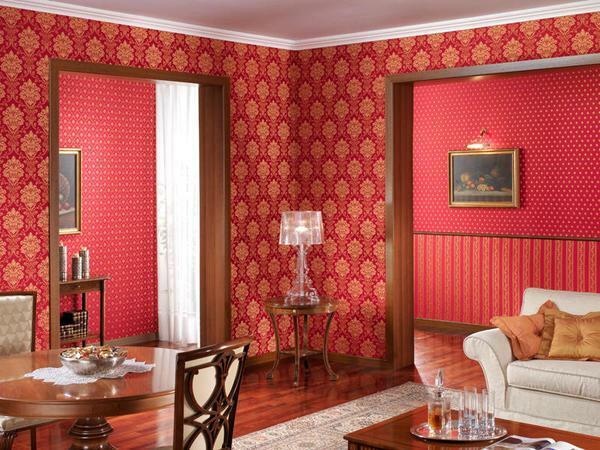
Rough wall finishing is an important stage of repair. Preparation of walls in the bathroom has its own nuances, as this is a room with a special climate. Increased air humidity, frequent temperature changes are the main reasons that materials are selected very carefully for finishing this room.
Surfaces in the bathroom should be covered with moisture-resistant finishing material - only in this case the bathroom will be comfortable, beautiful and safe. And if we talked about different types of coatings for a bathroom more than once, then the question of plastering walls on our site has not been considered yet. In this article we will tell you which composition is best used for plastering walls in the bathroom.

Than plastered the walls in the bathroom under the tile?
Which plaster to use for wall leveling in the bathroom depends on which materials the walls are made of and how they are processed. All plasters are divided into two large groups:
- Plaster on gypsum base;
- Cement-based plasters.
The first ones can only be used for interior finishing work, and they are absolutely not suitable for a bathroom, as gypsum very poorly tolerates moisture. The second type is more versatile, it is not exposed to moisture, so it is great for wall finishing in the bathroom.

 Gypsum plaster
Gypsum plaster  Cement plaster
Cement plaster 
Depending on the material of the walls
The concrete kind of plaster we choose will depend on the material of the walls. Let's consider possible variants.
Concrete
Professional masters-finishers often have to apply plaster directly to the concrete surface, as this is a very common material for the construction of houses. For concrete walls, one of two types of cement plaster is usually chosen:
- traditional cement-lime;
- more modern polymer-cement.
The latter is a conventional cement slurry with the addition of plasticizers, which make the mass more elastic.
For the best result, before you start plastering, concrete walls can be reinforced with special nets made of metal or fiberglass.
 Polymer cement plaster
Polymer cement plaster Brick
Brick walls are rather undemanding, so they can be plastered with a variety of compounds. Most often, one of the following varieties of plaster mixtures is chosen for brick finishing works:
- cement;
- cement-lime;
- sand-lime;
- calc-plaster( this option in the bathroom is better not to use).
The finish quality is affected by the pour point of the plaster mixture. The gypsum plaster dries very quickly, so it should work at the appropriate speed. The time for the hardening of the lime plasters is much smaller, but they are much more plastic.

 Cement plaster
Cement plaster  Cement-sand plaster on walls
Cement-sand plaster on walls  Application of cement-lime plaster
Application of cement-lime plaster If you need to put a thick layer of plaster mixture, strengthen the walls with a special mesh.
Foamed concrete
Foamed concrete walls have a porous surface, so they need to be leveled. The plus is that on the relief surface, unlike the smooth, the plaster falls very well. But, in order to work easily, you need to choose special plaster mixtures, as usual for such walls are not suitable. The specialists also do not recommend using universal compounds.
Information that the plaster is designed for foam concrete works is indicated in the package. Firms producing such mixtures are now quite a lot, so finding a suitable one will not be difficult. Often, synthetic reinforcing agents are added to the composition of such plasters.
 Plaster for foam concrete
Plaster for foam concrete Gypsum blocks
Partitions made of gypsum are not the best solution for a bathroom, as this material does not like high humidity. However, provided that the walls are made of modern, high-quality, moisture-resistant( !) Gypsum blocks, this option can be considered quite acceptable.
Only gypsum plaster mixes are suitable for gypsum blocks, since the cement slurry on such a surface will simply not hold. To avoid the damaging effect of moisture on the plastered surface, the walls must necessarily be treated with a special waterproofing compound, and only then lay the lining.
 Gypsum plaster for gypsum blocks
Gypsum plaster for gypsum blocks How to plaster?
The plastering of the walls in the bathroom passes in several stages.
- Surface preparation. We clean the walls of dirt and debris of old finishing materials. If there are large, noticeable spots on the surface, they should be removed. If the surface of the walls is perfectly smooth, we add a relief. To do this, walk through them with a special notch - so the plaster will stick better.
- Applying the initial layer. The first layer of plaster is called spatter. At this stage, the plaster mixture should be diluted to a sufficiently liquid consistency, so that the solution can be applied in a thin layer. First, the wall needs to be moistened with a paint roller or a conventional spray gun. Then take the trowel and in small portions throw the mixture on the wall. This layer must be embossed, so we do not equal anything.
- Application of the base coat. The second layer of plaster is also called draft. For him, we need a thicker solution, which we will apply with a trowel, and then level with a long metal half-braid. The thickness of this layer should be approximately 0.5 cm.
- Applying the final coating. The last layer of plaster is called finishing or finishing. It should be significantly thinner than the rest, so it should be applied to the maximum flat surface. Before proceeding with the finishing, make sure that the previous plaster layers have dried well. Then again, moisten the walls and start applying the plaster, immediately leveling the area behind the plot. You can apply the mortar with a spatula, but smooth it out with the same half-circle, making circular movements against the clockwise direction.


Do I need an additional waterproofing?
In conclusion, we will try to answer the question of interest to many beginner craftsmen, "Should additional waterproofing be provided for walls in the bathroom?".The answer in most cases will be negative.
If you use materials designed for finishing rooms with high humidity( for example, ceramic tiles, plastic panels or moisture resistant decorative plasters), then you do not need waterproofing. About the case in which we can not do without it, we have already written above in the section on plastering of gypsum blocks.
Decorative moisture resistant plaster for the bathroom was considered by us in another article.

In the next video, the author will show how to plaster the walls in the bathroom of with moisture-resistant gypsum plaster.


